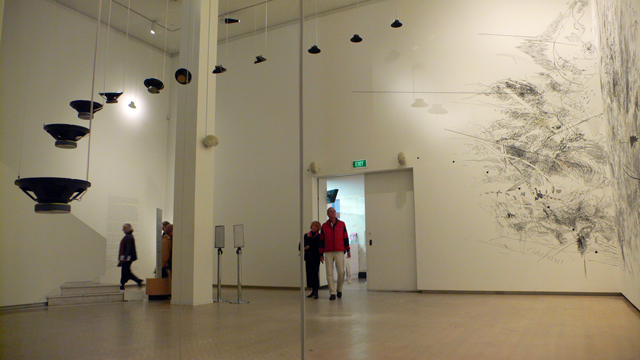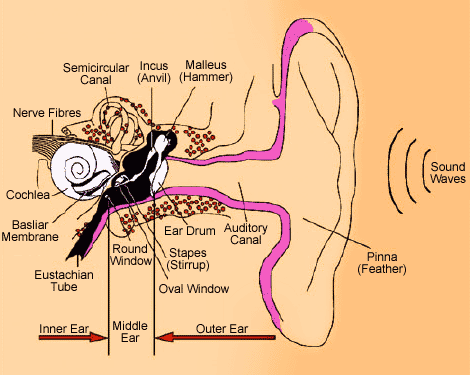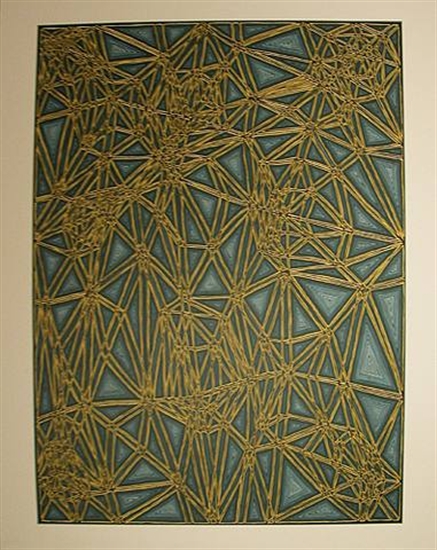
“Untitled” with Julie Mehretu, dimensions unknown

Four Color Sound, dimensions unknown
w/ Lighting Design by Jeremy Choate
The first song on the sounds page of Stephen Vitiello's website reminds me very much of Mogwai or Godspeed You! Black Emperor. It had a strange structure and rhythm to it. He said it was made for someone as a supplement to their song, I would like to know what the final song sounds like. If someone were to give me this to build a song over, I believe I would have a tough time understanding the rhythm and playing something that didn't feel almost random. However, the randomness of it is interesting in how the asyncopation still seems to work.
Tom mentioned in our meeting that the root of sound art was in electronic music and asked if I listened to any of it. I said that I don't really like electronic music. I guess I had the wrong idea of what he was talking about because I was thinking of something like dance or techno music, which I don't enjoy for it's excessively repetitive thumpclapthumpclapthumpclapthumpclap. However, Vitiello's work is not this, his is much more interesting and complex. It's funny that in the endless possibilities of electronic music, the standard that pop-culture has landed on is techno music, or at least that is what I associate electronic music with.
Vitiello's sounds can be heard here:
http://www.stephenvitiello.com/index.php?id=C0_4_2
I know one of his songs is composed of some of his nature recordings, but I would like to know how he makes some of his other music. I understand the method of slicing up a recording and putting pieces of it to a rhythm, but he also does some strange stuff which seems to be made from a synthesizer but seems too organic to be composed of a computer generated beat or note pattern.

Four Color Sound, dimensions unknown
w/ Lighting Design by Jeremy Choate
The first song on the sounds page of Stephen Vitiello's website reminds me very much of Mogwai or Godspeed You! Black Emperor. It had a strange structure and rhythm to it. He said it was made for someone as a supplement to their song, I would like to know what the final song sounds like. If someone were to give me this to build a song over, I believe I would have a tough time understanding the rhythm and playing something that didn't feel almost random. However, the randomness of it is interesting in how the asyncopation still seems to work.
Tom mentioned in our meeting that the root of sound art was in electronic music and asked if I listened to any of it. I said that I don't really like electronic music. I guess I had the wrong idea of what he was talking about because I was thinking of something like dance or techno music, which I don't enjoy for it's excessively repetitive thumpclapthumpclapthumpclapthumpclap. However, Vitiello's work is not this, his is much more interesting and complex. It's funny that in the endless possibilities of electronic music, the standard that pop-culture has landed on is techno music, or at least that is what I associate electronic music with.
Vitiello's sounds can be heard here:
http://www.stephenvitiello.com/index.php?id=C0_4_2
I know one of his songs is composed of some of his nature recordings, but I would like to know how he makes some of his other music. I understand the method of slicing up a recording and putting pieces of it to a rhythm, but he also does some strange stuff which seems to be made from a synthesizer but seems too organic to be composed of a computer generated beat or note pattern.
















































